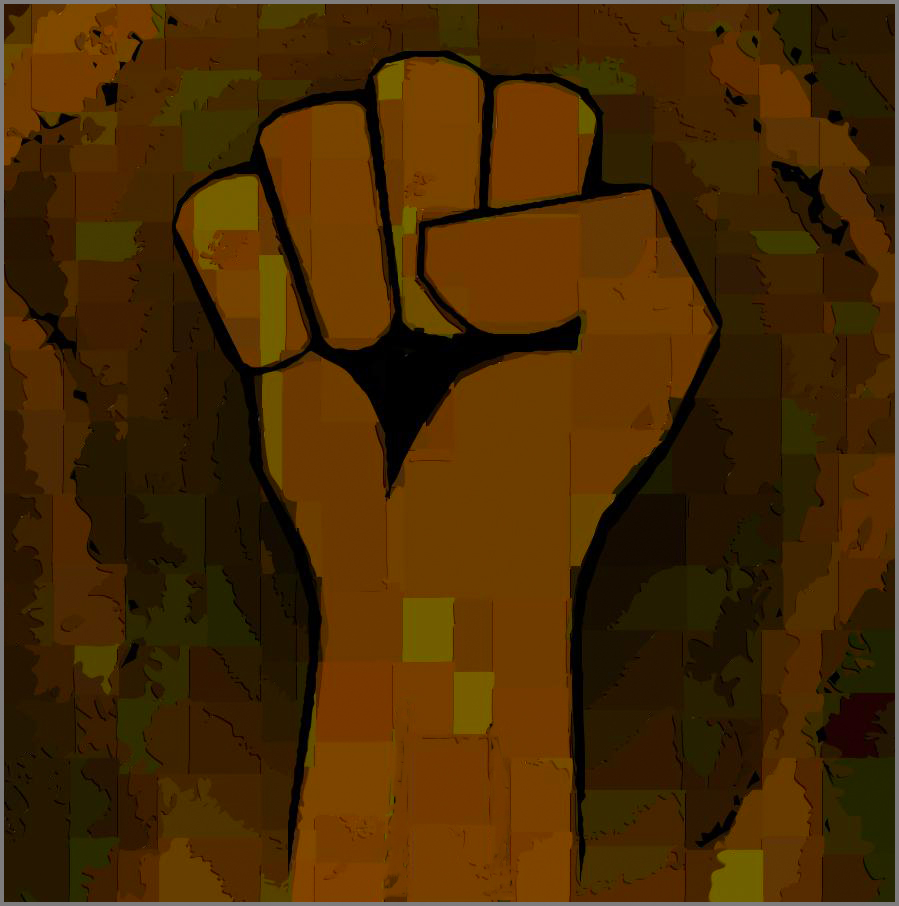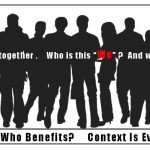


The psychological traits of true believers in mass movements can be observed in the followers of contemporary political figures like Donald Trump, Kamala Harris, Barack Obama, and Bernie Sanders.




The psychological traits of true believers in mass movements can be observed in the followers of contemporary political figures like Donald Trump, Kamala Harris, Barack Obama, and Bernie Sanders.
I haven’t lost my Social Security check yet.
I’ve got health care.
DEI (diversity, equity, inclusion) doesn’t affect me.
I’ve got a job.
I’m not an immigrant.
Addressing the question “if it doesn’t affect me directly, why should I care?”, it’s crucial to understand the broader impact of community organizations. Understanding and evaluating community organizations requires a multifaceted approach. By considering their effectiveness, transparency, coalition-building efforts, and legitimacy indicators, you can make informed decisions about which organizations to support and engage with. Remember that while an organization’s impact may not always be immediately apparent to you personally, their work often contributes to broader societal improvements that can benefit everyone in the long term.
For full article We Need Organizations CLICK HERE
Addressing the question “if it doesn’t affect me directly, why should I care?”, it’s crucial to understand the broader impact of community organizations. Understanding and evaluating community organizations requires a multifaceted approach. By considering their effectiveness, transparency, coalition-building efforts, and legitimacy indicators, you can make informed decisions about which organizations to support and engage with. Remember that while an organization’s impact may not always be immediately apparent to you personally, their work often contributes to broader societal improvements that can benefit everyone in the long term.
In an era where organizations may operate virtually or from home offices, developing transparency is crucial:
What If!
Rodney Coates
What if nobody sees what you do?
What if nobody knows how you feel?
What if nobody cares that you care?
What if nobody does what you do?
What if nobody reads what you write?
What if nobody thinks the way you do?
Will you still be who you are?
Which Side Are You On?
By Florence Reece
This song emerged during the Harlan County War, a
series of coal miner strikes in Kentucky. Florence Reece was the wife of a union organizer and her song became the anthem for the labor movement and was widely covered by artists like Pete Seeger.
We know that you all cannot support nonviolent revolution in the same way and we are not asking you to. But before we ever start we need to know who will support nonviolent revolution and at what level. Are you an Actor, Ally or Accomplice? Click this link. After you have figured out what it is you are willing to do please fill out and submit the What Will You Do Survey.
We need to build a movement! Not another organization. We need to support active organizations that we already have.
Be aware of the gatekeepers (pimps, preachers and prostitutes), they will want to stop you, slow you down, and turn this movement around. Some earn their income from our plight. Their behavior might get you killed.
These reflections and critiques offer insight into the challenges and nuances of organizing for social and political change, especially in a community with unique demographic and cultural dynamics like Spokane’s. I’ll break down some of the key themes and ideas that emerge from my observations, followed by an analysis of the different organizational meeting styles I have observed.
I would like to highlight a critical stumbling block: the diversity of backgrounds and experiences among African Americans in Spokane, combined with open housing policies that have dispersed the community geographically. This dispersal creates physical and cultural barriers to organizing. Efforts at building unity often falter because of a lack of shared experiences or common interests.
The “myth of unity” is especially powerful. True solidarity often requires honest critique and the ability to challenge one another constructively. However the fear of disrupting fragile social bonds can prevent this, leaving communities stagnant or divided. Recognizing this tension is a crucial first step toward addressing it.
The opposition’s strategy of fostering disunity by perpetuating myths of unity and relying on ineffective slogans such as “each one teach one” resonates. While the latter sounds appealing, it does not scale quickly enough to make the kind of sweeping change necessary in the face of systemic opposition.
Calling for methods to teach larger groups and work collaboratively rather than individually is vital. Scaling up requires intentional, structured approaches that balance grassroots engagement with broader, unified strategies.
Starting with small groups (5-10 people) that reach consensus and funnel ideas up to larger groups (20-40 people) is practical and reflects effective organizing models. This approach mirrors successful strategies used in community organizing and union movements. The key is ensuring that these small groups do not become isolated or self-contained but instead feed into a larger, cohesive effort.
Use independent media to disseminate ideas and strategies. In the digital age, leveraging social media, podcasts, and other platforms can amplify these messages far beyond the immediate community.
These groups are common in grassroots organizing and often act as pressure valves for frustration. While they may provide a sense of camaraderie and shared grievance, they rarely lead to action or change. The key to transforming these groups is introducing structure, goal-setting, and accountability.
These groups are the backbone of many movements, as they are action-oriented and often achieve measurable results. However, they can become insular and overly reliant on the comfort of their small size. To scale up, these groups must develop strategies for outreach, recruitment, and leadership development. Succession planning is also critical to prevent burnout and stagnation.
Larger organizations with entrenched leadership may have the appearance of strength, but their top-heavy structure often stifles grassroots participation and innovation. Additionally, their focus on appearances (e.g., press conferences, grand speeches) can overshadow actual community engagement. Breaking down these gatekeeping tendencies requires fostering a culture of transparency, shared decision-making, and accountability within these organizations.
I want to note a successful Democratic meeting – a state legislative town hall I recently attended which stands out as a shining example of effective organization and engagement. Its success can be attributed to several factors:
This model could serve as a blueprint for other events, fostering trust, transparency, and community buy-in.
To overcome the challenge of disunity, focus on identifying shared goals and emphasizing common interests rather than differences. This could involve hosting listening sessions or cultural exchanges to deepen understanding among community members.
Develop leadership training programs to empower new voices and prevent the monopolization of power by a few individuals. Encourage established organizations to adopt more democratic, participatory structures.
The thoughtful, inclusive approach of the town hall meeting I attended is replicable. Key elements to incorporate into future events include:
Leverage independent media to broadcast successes, share strategies, and counteract misinformation. Platforms like blogs, YouTube channels, and podcasts can amplify voices that mainstream media often overlooks.
I hope these reflections capture the complexity of organizing for social justice in a fragmented community. The challenges outlined—disunity, ineffective strategies, and entrenched gatekeeping—are significant but not insurmountable. By building on effective models like the town hall meeting and prioritizing scalable, inclusive approaches, there is real potential to create lasting change.
If any of this information here at 4comculture.com is useful to you, pass it on to friends and community leaders in order that they might learn.

Sometimes we can’t wait on the cavalry!
Let’s put the wagons in a circle.
The battle has begun!
We are under attack, we must do the best we can with what we have.
The creative will have the best chance for survival.
It’s good to be prepared and independent but in times like this we need to be inter-dependent.
What does it mean to be a brotha? Is that a term based upon skin color or ethnicity or is it an understanding of common goals? We are in a war that’s being fought on two levels. One is the immediate problem with COVID-19. The other is the systemic problems that lead to a disproportionate number of deaths among people of color and the poor.

If we are brothas we need to support each other in this war at both levels. We need to support each other in measurable ways, not just throw around cultural symbols. We need to start by asking little things of each other.
If we only had 14 brothas contributing at this level this would be $1400 per month or $16,800 per year. Imagine what would happen if we had 100 brothas.
Your comments are welcome. If I haven’t heard from you by June 12, I will assume you are not interested.
Bob L. info@4comculture.com


This year we gathered as usual Sunday January 19 at Holy Temple Church of God in Christ for the Commemorative Celebration. Monday January 20 we gathered at the Spokane Convention Center for a video presentation about the MLK East Central Community Center, inspirational speeches, Max Daniels of House of Soul gave his rendition of A Change Is Gonna Come with a slide presentation that illustrated previous MLK rallies and CLICK: Those Who Showed Up during the year to speak to power, marched around several blocks downtown, and returned to the Exhibit Hall where Michael Moon Bear youth drummers entertained.
One was that we spread the love and brotherhood of Dr. King’s teachings and the other was that we show up February 3 at City Hall to ask the City Council to rename the East Central Community Center as the Martin Luther King Community Center.
People leave these rallies without knowing what they can do. What will you do between now and when we gather again in January 2021 for the MLK rally and march? In the next few weeks there are the impeachment proceedings followed by the campaigns for the presidential and other elections in November. We need to get busy.
If you believe in CLICK: These Principles we need you to go to your local coffee house and form a discussion group with five to ten individuals to discuss issues, plan strategies and take actions. Begin building the community you want to live in. We want to build 100 of these discussion groups. If we have 100 discussion groups we will be able to turn out 500 to a 1000 people to demonstrate, to knock on doors, to participate in social justice activities. Regardless of whomever is elected we will have built the movement we need to support the human rights and social justice changes that Sam Cooke wrote about in one of the greatest songs of all time A Change is Gonna Come.
Here are some things that you can do immediately:
Read 198 Methods of Nonviolent Action. Click: https://4comculture.com/archives/14129
Read about the 12 things needed for a movement. Click: Where Do You Want to Start?
Listen to Shaun King’s podcast and take his action steps. Click: The Breakdown

This gallery contains 1 photo.
“This” is our Values: Can We Get Consensus On This? We believe in justice for all * We believe in lifting up the disadvantaged * We believe in dismantling unjust criminalization systems * We believe in equal protection under … Continue reading
What Can We Do Spokane? How about inviting 5-6 people for coffee, tea or milk and have a DISCUSSION about how you can help The Poor People’s Campaign locally. After your meeting visit https://wp.me/P1UPVH-2Xj and use the Leave a Comment box to tell us about what you decided. Below is more information about the campaign. The national website is www.poorpeoplescampaign.org